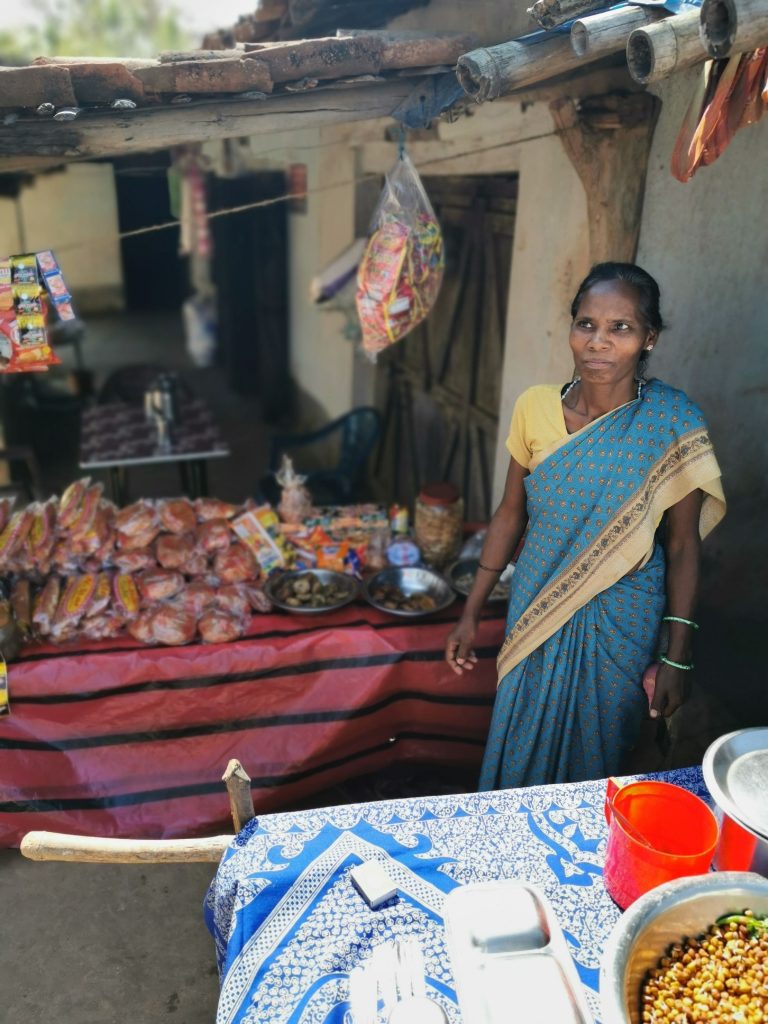The Gumla district in southwest Jharkhand is mainly inhabited by indigenous groups such as the Kurux. The region is therefore rich in culture and traditions. But little by little, traditional structures and knowledge are being lost. The younger generation is finding it increasingly difficult to reconcile tradition and modernity.
The Schöck Familien Stiftung supports a program to protect the traditional structures of the indigenous population and to strengthen their livelihood.
Background:
The state of Jharkhand and also the district of Gumla are rich in natural resources such as minerals. Large parts of the region were once forested, but more and more forests are being cut down due to the industrial mining of minerals. The victims are the Adivasi, who have always suffered from discrimination. For them, the forest represents their livelihood alongside agriculture, because they live in the forest or get their food from it. For about 70 percent of the Adivasi in the Gumla district, agriculture is the main source of income. However, due to climate change and a lack of knowledge about the right cultivation methods, this source is no longer safe. Since the agricultural yields alone are not sufficient, they depend on the products from the forest.
Due to the process of industrialization and modernization, the residents not only lose their living space, but also their identity. Gumla District is not only rich in natural resources, but also in culture and tradition. But the younger generation in particular has great difficulties in reconciling their culture and modern influences. More and more villagers are migrating to the larger cities in search of non-farm work. It is not uncommon for them to be abducted, mistreated and exploited there. The emigration from the villages has drastic consequences: the population figures in the villages are falling rapidly. Traditional structures and influences are disappearing with them.
The situation of the indigenous youths in the Gumla district is particularly alarming: for almost half of the male youths it is not possible to continue their education after leaving school. Since there are too few educational institutions or they are far too far away, many young people are without any prospects after school and are unemployed. Many of the male adolescents are addicted to alcohol.
Plan:
The Samaj Pragati Kendra organization is committed to strengthening the population in the Gumla district by working with the people to find solutions for using the available resources effectively and sustainably on the one hand, and developing new income-generating measures on the other. This and also concrete measures to introduce them to their own culture, such as the construction of an Adivasi museum, language classes and the teaching of traditional art, help to ensure that the population and traditions are strengthened in the long term.
In order to increase people’s livelihood, various income-generating measures are being developed together with the villagers: young people are trained in sewing and thus earn an additional income. Women even open their own shops where they can sell the clothes. The creation of kitchen gardens has a double benefit for the families: they use some of the grown vegetables for their own consumption, and they can sell the surplus.
In order to strengthen the main source of income, agricultural cultivation, dams are built. They ensure that rainwater is stored and the fields can be irrigated more effectively, and erosion is also prevented. These measures are carried out together with the residents and with the support of the government.
In the course of protecting and strengthening the culture, traditional musical instruments are used again at celebrations. The original language should also be brought closer to people again. Speeches should be held in the traditional language again and even the students are taught in this language. Selected people are trained to bring the traditional art and culture closer to the other residents. They serve as “ambassadors” of their culture, so to speak. The characteristics of their culture are systematically documented so that people can regain a feeling for their origins. Traditional items are even displayed in a museum which the community and outsiders can visit. On the one hand, the culture is brought closer to the people themselves, on the other hand, it is preserved for future generations.
Project sponsor: Andheri Hilfe eV
Project partners: Samaj Pragati Kendra, Ranchi, Jharkhand
Funding year: 2021 – 2022
Project No.: 135-21 si/A

